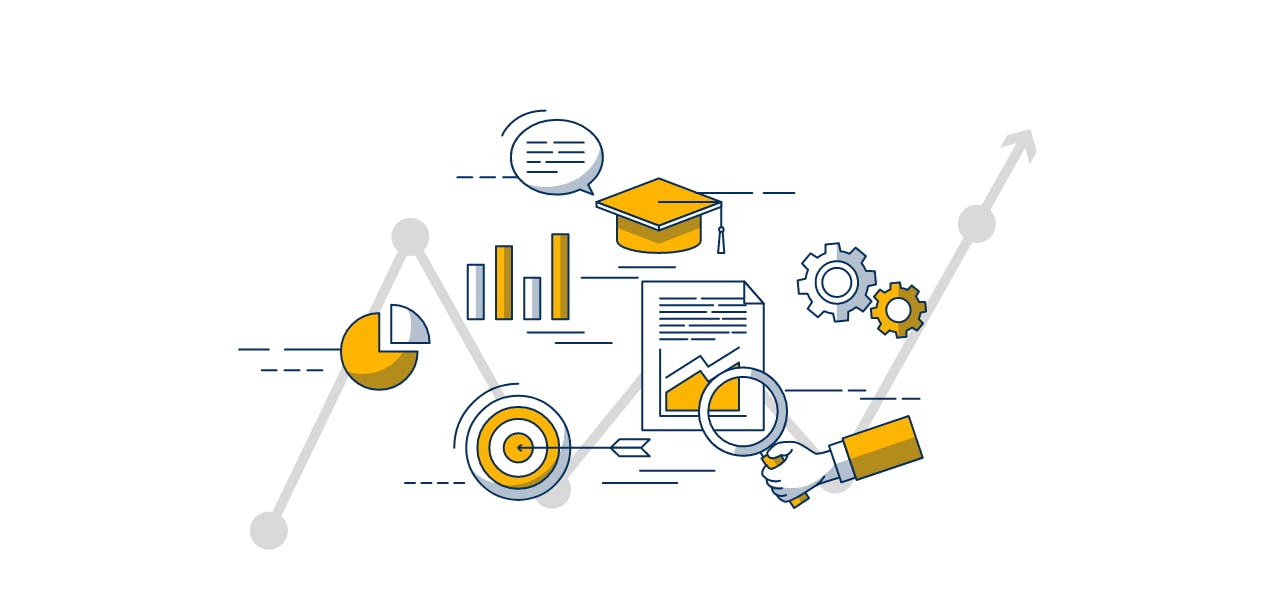Analytics is a field of science used in research everywhere today. Whereas once scholars were manually collecting data and sifting through it, now, Big Data is generated as easily as a stroll through the interconnected World Wide Web. All industries have been able to benefit from this massive volume of information, but using data in the Digital Era for education analysis is one of the most impactful methods to change the world.
The application of learning analytics makes it much more feasible for teachers and others who work with students, either directly or indirectly, to make adjustments to course curriculums and lesson planning. Through analysis of these analytics, those in charge of education and getting knowledge to learners are able to use interpretive and experimental approaches to support each learner on their own level. Through analytics, a deeper understanding of every individual student’s strengths and weaknesses is garnered, helping educators guide learners into a more positive direction with their education and improving the chances of success.
What is Learning Analytics?
Educators and those involved in designing course curriculums have always attempted to use analytics on some level to create content. With digital technology and the significant rise in data collection methods, instead of random attempts at defining what students need, learning analytics is employed.
Learning analytics is the term used to refer to how data about learners is measured, collected, analyzed, and reported. It is put into context in order for those using it to understand their students and then optimize their curriculum and lessons, as well as the environment overall.
This field of study is used in the academic world, but it’s also important in commercial industries as companies strive to predict what their consumers need and what they will purchase.
Subjects in learning analytics include everything from statistics and computer/data sciences to artificial intelligence. They also encompass soft skills that study human behavior, such as sociology and psychology.
Big Data and the Demand for Higher Impacts
While research regarding learning styles and student capability has been around for decades, with educators tracking the progress of their students and schools and universities receiving grades and labels based on their data, the ease of Big Data and learning analytics in general has prompted a push for higher impact and greater student achievement. The rationale is that if it’s easier and more comprehensive for instructors and course designers to understand what students need, they should be able to apply it and therefore maximize student learning opportunities.
Learning analytics is now used to do the heavy lifting, analyzing and tracking student progress, weighing strengths and weaknesses, monitoring school and university achievements, creating assessments, and evaluating teaching pedagogies with evidence-based informative results. It’s a field of science that serves to build from the foundational disciplines and, from them, create new opportunities to improve student learning and use innovative technology to optimize instruction.
Making Positive Strides Now and In the Future
In the past, instructors and educators have used learning analytics to attempt to predict how well their students would succeed academically and to identify those who were “at risk.” But now, digital learning analytics have come much further and are still improving.
Evidence is analyzed to determine how instructors can use the information given through analytics to benefit their learners, making positive strides in areas such as:
- Better development of real-world skills and strategies that will help students develop lifelong learning capabilities
- Personalization of student learning, including generating feedback in timely manners to help students understand what they are doing well and what needs to be improved upon
- Encouraging collaboration, teamwork, critical thinking skills, and both listening and giving communication
- Fostering creativity where there once might have been little opportunity to allow for freedom of expression
- Encouraging self-reflection as one of the best way to learn
- Using evidence-based pedagogical strategies
As learning analytics improve, so, therefore, do the use of them in the classroom. With universal applications, student achievement should become maximized.
